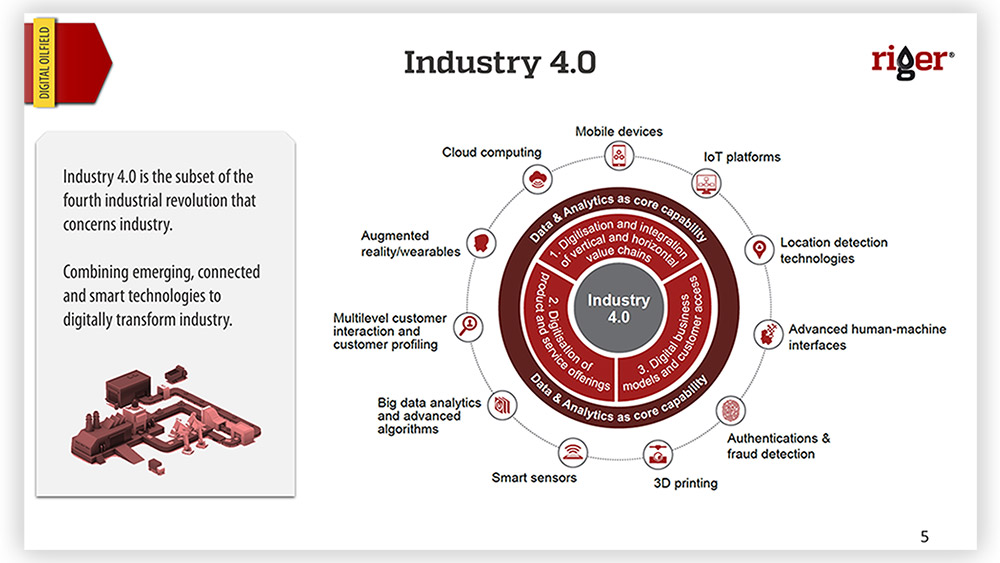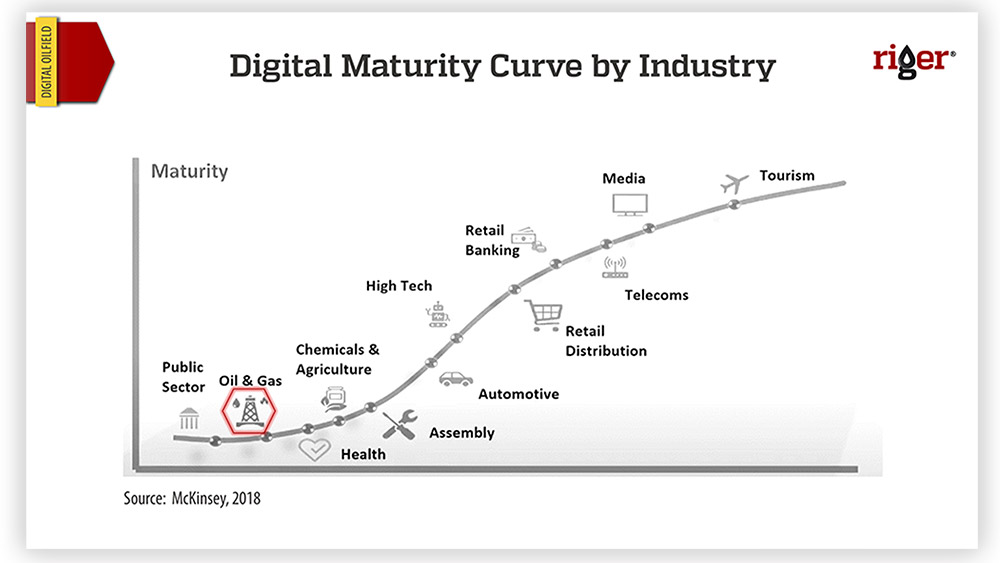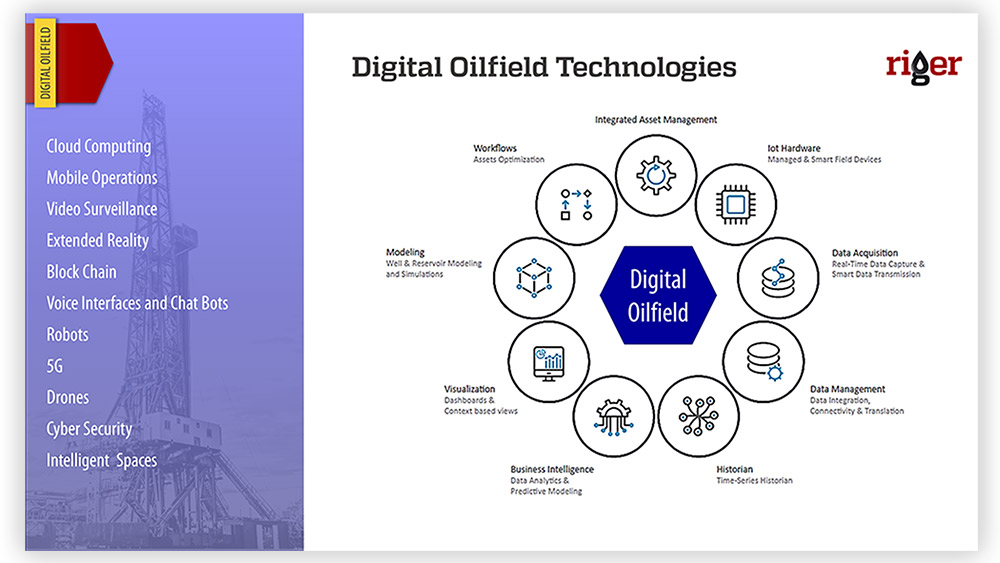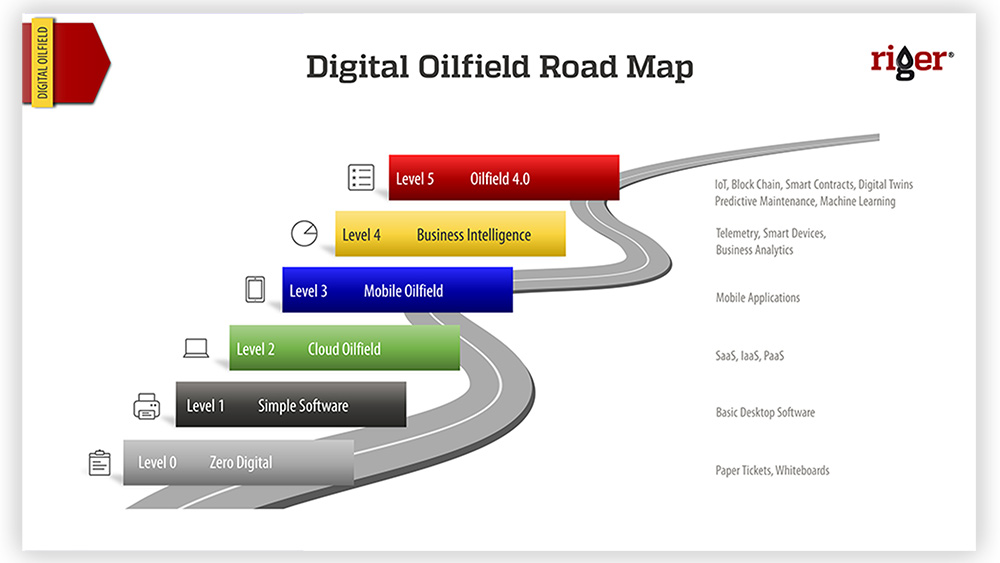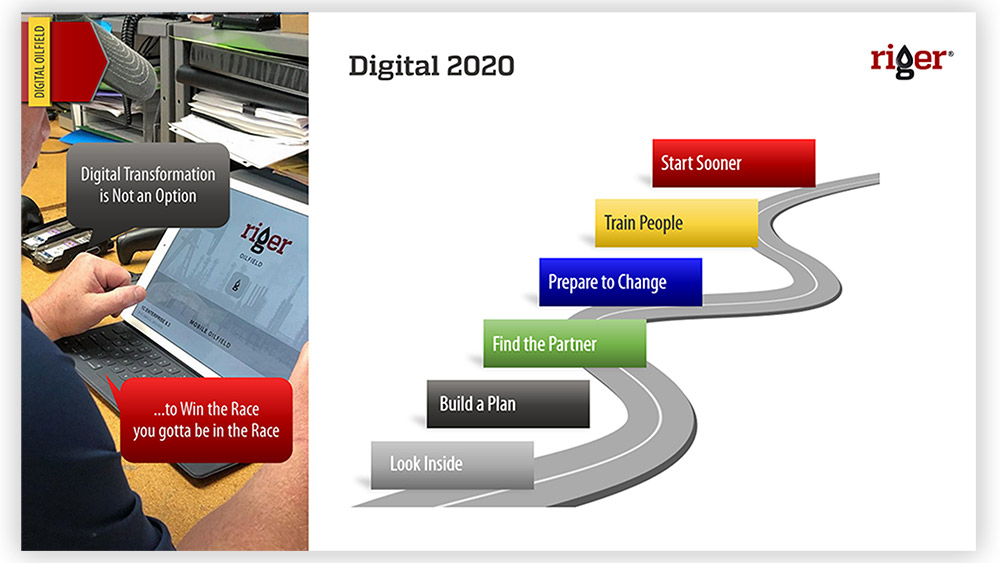The Digital Oilfield and Oil and Gas 4.0 became the buzz words. There is a long list of cutting-edge technologies, which are used or can be used in the oil and gas industry: Cloud Computing, Mobile Devices, Internet of Things, Blockchain, Artificial Intelligence, 3D Printing, Big Data, and others. All these technologies require visionary leadership, significant investments, industrial adaptation, business applications, and in-field testing.
![image]()
Industry 4.0 includes digitalization and integration of vertical and horizontal value chains, product and service offerings, adjustable business models, and digital customer access.
The futuristic oilfield picture is conflicting with current paper-based reality, unprepared organization culture, and low digital maturity. Based on McKinsey’s research, the oil and gas industry is one of the lowest digitalization sectors. It means that there is a huge room for digital transformation and great opportunities for new tech implementations.
![image]()
Future digital oilfield technologies require a solid foundation of current tech: cloud computing, mobile, etc. Another big problem is organizational behavior and business culture.
![image]()
Industrial digital transformation can last 5-15 years. We can see that the process will not be homogeneous: big and midsize companies will start earlier, different regions will act differently, speed of digitalization will be defined by communication infrastructure, etc.
This year crisis events, like COVID-19, oil price crash, etc., worked as a catalysator and increased the speed of oil and gas digital transformation.
